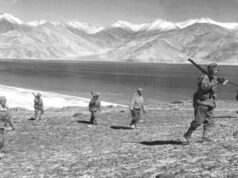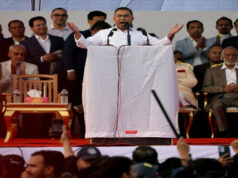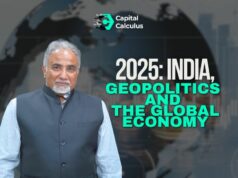Following the Trump administration’s imposition of reciprocal tariffs, India and the U.S. are making efforts to accelerate negotiations for a Bilateral Trade Agreement (BTA).
Indian External Affairs Minister S Jaishankar and U.S. Secretary of State Marco Rubio held a phone conversation on Monday. This was the first call since President Trump’s announcement of reciprocal tariffs.
The Tariffs Announcement & April 9
The announcement came as part of a broader trade policy that sees U.S. tariffs on all Indian imports set at 26%. The initial round, a 10% base tariff, was enforced on April 5, with the rest is set to take effect on April 9.
This move rattled financial markets globally, with India’s Sensex and Nifty plummeting over 3% on Monday. In the midst of this volatility, India has refrained from retaliating with counter-tariffs. Instead, it has been focusing on the BTA, hoping that a successful deal could mitigate the effects of these tariffs.
In their call, both Jaishankar and Rubio agreed on the urgency of concluding the BTA fast. Jaishankar expressed optimism, noting on social media: “Good to speak with US Secretary of State Rubio today. [We] agreed on the importance of the early conclusion of the Bilateral Trade Agreement. [I] look forward to remaining in touch.”
Good to speak with @SecRubio today.
Exchanged perspectives on the Indo-Pacific, the Indian Sub-continent, Europe, Middle East/West Asia and the Caribbean.
Agreed on the importance of the early conclusion of the Bilateral Trade Agreement.
Look forward to remaining in touch.…
— Dr. S. Jaishankar (@DrSJaishankar) April 7, 2025
About BTA
The BTA is seen as key to reducing trade barriers and deepening the economic partnership between India and the US.
India’s main concern is how the new tariffs could impact key export sectors. Industries like textiles, automotive and machinery are heavily reliant on access to U.S. markets.
A study by the Global Trade Research Initiative (GTRI) warned that India’s exports to the U.S. could decline by as much as $5.76 billion this year if the tariffs remain in place.
The U.S. is also seeking greater access to Indian markets for American goods. The Trump administration has long criticized India’s tariffs on U.S. products, especially in sectors like agriculture, electronics and medical devices.
U.S. State Department Statement
According to US State Department spokesperson Tammy Bruce, both sides underlined the strength of the US-India strategic partnership and acknowledged the need for progress toward a “fair and balanced” trade relationship. The discussions between Jaishankar and Rubio also touched on broader regional issues, including cooperation in the Indo-Pacific, the Indian subcontinent and other global areas of mutual interest.
India Focuses On Discussion, Not Retaliation
India has not retaliated against the tariffs, a decision that aligns with the U.S. Treasury Secretary’s advice to avoid escalating. In a recent interview, the Treasury Secretary warned against counter-tariffs, urging affected countries to “sit back” and “take it in”. The U.S. is also engaged in trade disputes with other major economies, including China. It has imposed retaliatory tariffs on Beijing, increasing concerns about a global trade war.
The growing uncertainty in global markets has led experts to believe that a well-negotiated BTA could offer a steadying effect, especially for India. Indian exports to the U.S. have been significantly impacted by earlier tariff hikes.
While the U.S. has placed the burden of tariffs on India, Indian officials are optimistic that an agreement could bring about a much-needed reduction in tariffs and broader access for American goods in Indian markets.
India’s Commerce Ministry has stated that it is closely studying the implications of the tariffs and remains focused on finalising the first phase of the BTA by the end of 2025. If successful, the agreement could provide a strategic economic advantage, not only softening the impact of tariffs but also boosting India’s global trade standing.





